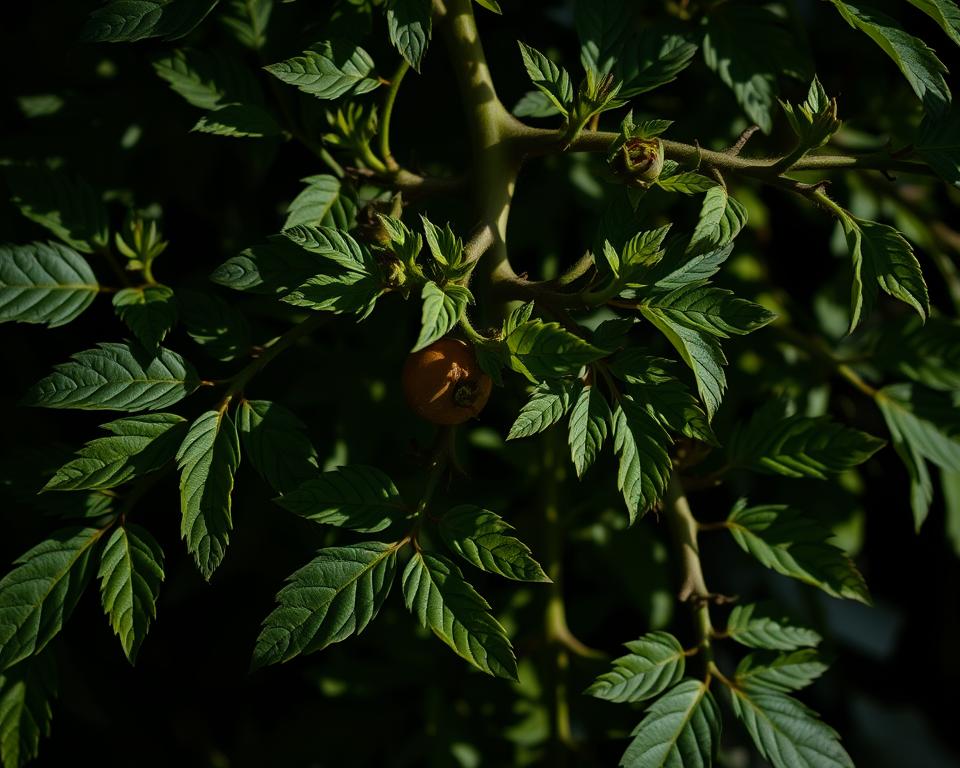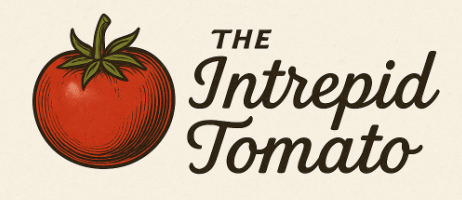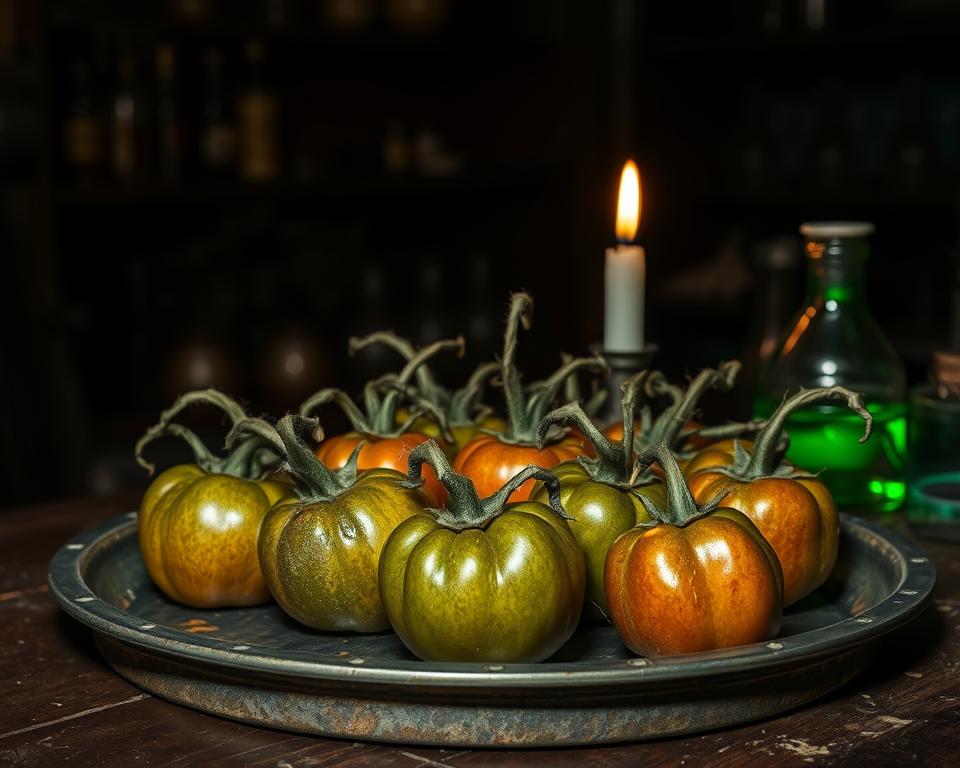The Forbidden Fruit: Why Europeans Once Believed Tomatoes Were Deadly
For over 200 years, tomatoes were shunned in Europe. It wasn’t because of their taste. Instead, people believed they were deadly. Tomatoes came from the Americas, brought back by Spanish conquistadors in the 16th century.
At first, they were grown for decoration. But people didn’t eat them because of superstition and lack of knowledge.
We look into the history of this belief. We see how a fruit now loved worldwide, like in Mediterranean diets, was once seen as poisonous. The bright red color and nightshade family connection made people think they were toxic.
The Origins of Tomatoes: From Mesoamerica to European Tables
The story of tomatoes starts in Mesoamerica, where they were loved long before they reached Europe. The Aztecs grew tomatoes as early as 500-700 AD. They were a big part of their food and culture.
Native Roots in the Americas
In their home, tomatoes were more than food. They were important in Aztec culture and spirituality. The Aztecs used tomatoes in many dishes, loving their bright color and taste.
Cultivation and Use: Tomatoes came in many flavors, from sweet to tangy. The Aztecs mixed them with other foods to create tasty dishes. This early use helped tomatoes become popular worldwide.
The Journey to European Shores
Spanish conquistadors brought tomatoes to Europe in the early 16th century. At first, people were unsure about them. The fruit’s bright color and its family ties to poisonous plants made people think it was dangerous.
The Nightshade Connection: The Nightshade family includes some toxic plants. This made Europeans cautious about tomatoes. But, tomatoes themselves are not poisonous, unlike some parts of the plant.
| Year | Event | Location |
|---|---|---|
| 500-700 AD | Tomatoes first cultivated | Mesoamerica |
| Early 16th Century | Tomatoes brought to Europe | Spain |
| Late 18th Century | Tomatoes gain acceptance | Europe |
Exploring tomatoes’ history shows it’s more than just a food. It’s about changing cultural views and overcoming fears.

Were Tomatoes Poisonous? The Scientific Truth Behind the Myth
For a long time, people thought tomatoes were poisonous. But is there truth to this claim? Let’s look at the science behind tomatoes and their history.

The Poisonous Plant Nightshade Family
Tomatoes are part of the Solanaceae family, also known as the nightshade family. This family has plants like Atropa belladonna, or deadly nightshade, which are toxic. This might have led to the belief that tomatoes are poisonous too.
The Solanaceae family has both safe and toxic plants. While tomatoes are okay to eat, other plants in this family can be harmful if eaten.
Tomato Plant Toxicity: Leaves vs. Fruit
The tomato plant is not all the same. The leaves and stems have toxic compounds like solanine and tomatine. These can be harmful if eaten too much.
But the fruit of the tomato plant is safe to eat. Tomatoes are full of vitamins and antioxidants, making them good for you.
| Plant Part | Toxicity Level | Compounds Present |
|---|---|---|
| Leaves and Stems | Toxic | Solanine, Tomatine |
| Fruit (Tomatoes) | Non-Toxic | Vitamins, Antioxidants |
Are Green Tomatoes Poisonous?
Green tomatoes, which are unripe, have more solanine than ripe tomatoes. While not poisonous, eating a lot can upset your stomach.
Cooking or letting green tomatoes ripen can make them safer to eat.
Tomato Leaf Poisoning: Historical Cases
There have been cases of tomato leaf poisoning in the past. This was often because of misinformation or accidental eating.
These cases show why it’s important to know about the different parts of the tomato plant. And why we need accurate info to clear up myths.
Deadly Dinnerware: How Wealthy Europeans Actually Poisoned Themselves
Wealthy Europeans loved tomatoes and pewter plates. But, this love was deadly. The real problem wasn’t tomatoes, but the acid in them reacting with lead in pewter plates.
Lead Plates and Acidic Tomatoes: A Deadly Combination
In the 18th century, the rich used pewter plates. Pewter was made of tin and often had lead. Acidic foods like tomatoes could make the lead in pewter plates leach into the food, causing lead poisoning.
This silent killer led to many symptoms. These included stomach pain, feeling tired, and even serious brain damage.
The science behind this is simple. Tomatoes are acidic, with a pH of 4.3 to 4.9. This acidity reacts with lead in pewter, making toxic lead salts. The more acidic the tomato dish, the more lead was released, raising the risk of poisoning.
Class Divisions in Tomato Consumption
The rich thought tomatoes were poisonous because they used pewter plates. The poor, who ate from clay or ceramic, were less affected. This made it hard to understand the real cause of the problem.
The issue wasn’t tomatoes, but how they interacted with certain materials. This misunderstanding affected how tomatoes were seen and used in European cooking.
From Fear to Fascination: Changing Perceptions of Tomatoes
Tomatoes went from being seen as poisonous to becoming a key part of Mediterranean food. For a long time, Europeans were wary of tomatoes because they were in the nightshade family. But as people learned more about them, their views changed.
Brave Pioneers and Public Demonstrations
Brave souls like Robert Gibbon Johnson helped change how people saw tomatoes. In 1820, he ate a tomato in New Jersey, USA, to show it was safe. In Europe, it was more about slowly getting used to tomatoes through new recipes.
Events and shows also helped. By showing tomatoes in a good light, people started to see them as safe and tasty. It took years, with different places getting used to tomatoes at their own pace.
Medical Uses and Early Research
Research into tomatoes’ health benefits also helped. Back then, people thought tomatoes could cure many ailments. This research, even if not always proven, made tomatoes seem more valuable.
Tomatoes were found to be full of vitamins and antioxidants. This made them even more popular, seen as a way to get healthier.
The Rise of Tomatoes in European Cuisine
Tomatoes became a big deal in European food, thanks to their taste and versatility. They’re now a key part of many dishes, from sauces to salads.
| Country | Popular Tomato Dish | Year Adopted |
|---|---|---|
| Italy | Pasta Pomodoro | 18th Century |
| France | Ratatouille | 19th Century |
| Spain | Gazpacho | 16th Century |
The table shows how different countries took to tomatoes at different times. It shows how slow and gradual their acceptance was.
The story of tomatoes is one of change and growth. It shows how food preferences evolve over time. It’s a tale of cultural and culinary progress.
The Tomato Today: From Deadly Nightshade Fruit to Superfood
Today, tomatoes are a top fruit grown worldwide, used in many dishes and products. Their journey from being seen as toxic to being a staple in food is amazing.
We now see tomatoes as a superfood, full of vitamins and antioxidants. They are key in many cuisines, like Mediterranean and Italian cooking.
The shift from fear to fascination with tomatoes shows how views can change. As we learn more about their benefits, it’s clear tomatoes are here to stay.

